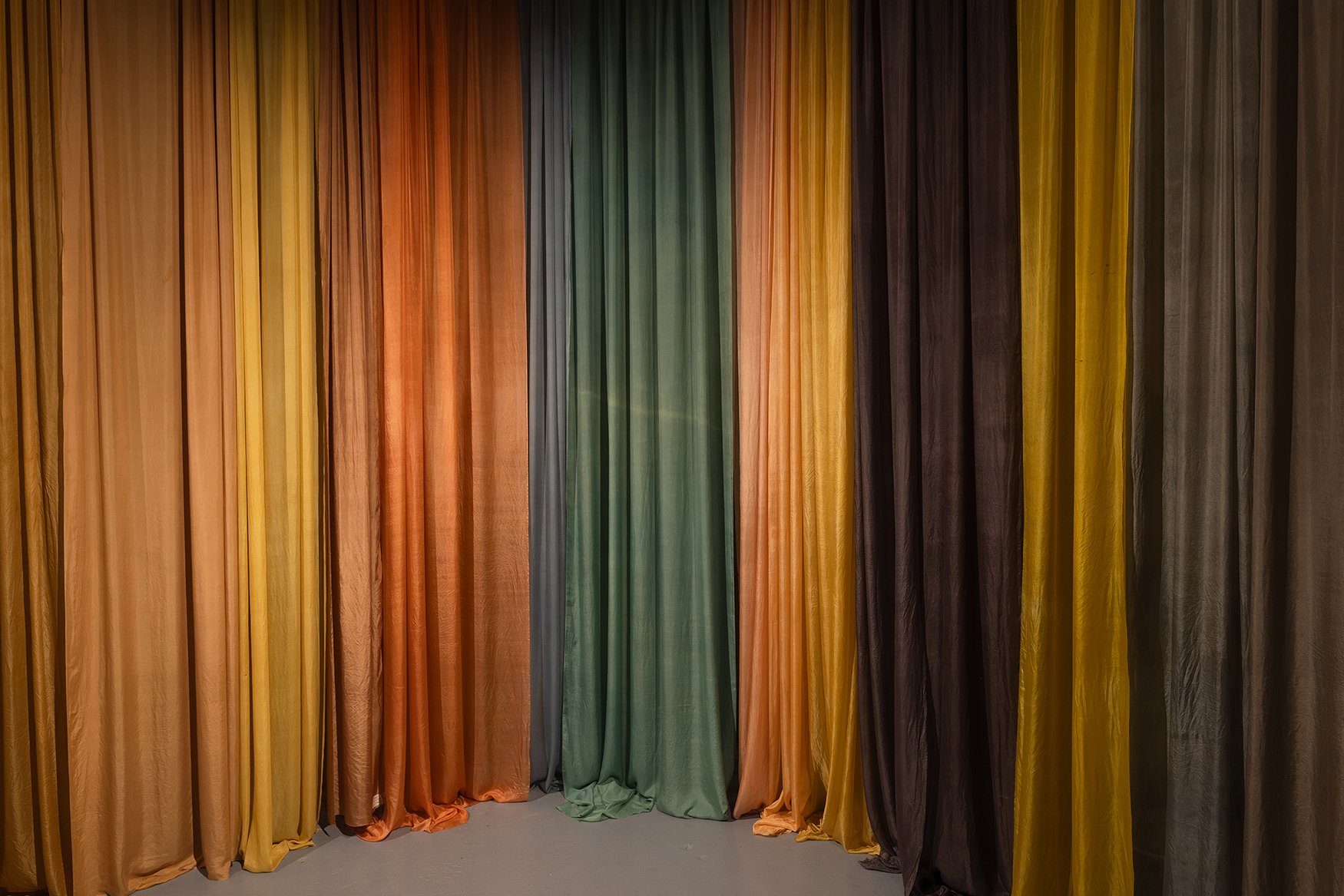
COLOUR PRISM FROM NATURE iiii
Installation, plant dyed silk
Three country cairn:
- Krokfjell / Pasvikdalen (69 degrees north and 28.6 degrees east) Sápmi (current meeting point of Russia, Finland and Norway).
- Goldajärvi (69 degrees north and 20 degrees east) Sápmi (current meeting point of Sweden, Finland and Norway).
- The plants collected in these areas between August 2022 and March 2024 have given 20 colors to the silks.
What is light, color, and pattern? How is it experienced, explored, and exploited? Through a scientific lens one may focus on the physics of light, color, and pattern. Light from the sun heats the earth, drives global weather patterns, and initiates the life-sustaining process of photosynthesis. On the grandest scale, light’s interactions with matter have helped shape the existence of all living beings. Indeed, light, color, and patterns provide a window on the universe—from cosmological to atomic scales—including culture, feelings, identities and our geopolitical dramas.
It is possible to widen this lens into aesthetic and political enquiries of the optical world. The sense of sight, alongside other senses such as scent, touch and intuition, are tools for perceiving the world and ways of communicating within it.
The displayed 10x4 metre large textile installation is an ephemeral work that symbolises yet also takes a concrete ´coloring moment´ from geographical border areas such as Sápmi (Norway, Sweden, Russia, Finland) and Gaza between palestine and Israel. The richness of plant species might in some cases be similar, what is introduced in some place is native in others. Plants are also crossing borders, sometimes in their own terms, but often they tell us about mobility of animals, goods and humans throughout time. The quality of the colours can tell a lot about a place, its nutrients, water levels and its climate. Invisible and visible borders, such as the one constructed by nation states, privatization laws, ecosystems, current and historical borders of conflict - over many years and borders, Hauan Johnsen has been dyeing tens of metres of silk fabric and wool cloth with plants collected from such areas.
Hilde Hauan Johnsen addresses the themes of geopolitics, identity, borders, belonging, nomadism, eternal material-based knowledge and traditions. Borders – as a concept and in an artistic and geo-political context – have for her been part of the driving force in observing and acting in the world. She works with her long-term method that focuses on combining two units of measurements: her private property boundaries and borderlines of greater geo-political interest. In her work, even a small plant is a history. Hauan Johnsen is deeply interested in natural fabric dyeing, and especially in the plant’s life in a particular region and its habitat, as well as what colour it presents or if the plant has an important use in folk medicine. As she has been traveling with this method throughout different regions, she ponders whether the same plants will be in these habitats in five to ten years.
- extract from the exhibition booklet.
Photographs by Joosep Kivimäe
Exhibition: Down in the Bog - Sporulation / curated by Karolin Tampere / EKKM - Contemporary Art Museum of Estonia, 2024.





